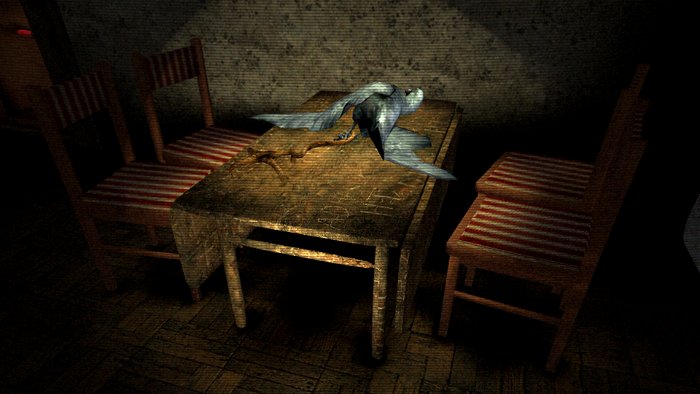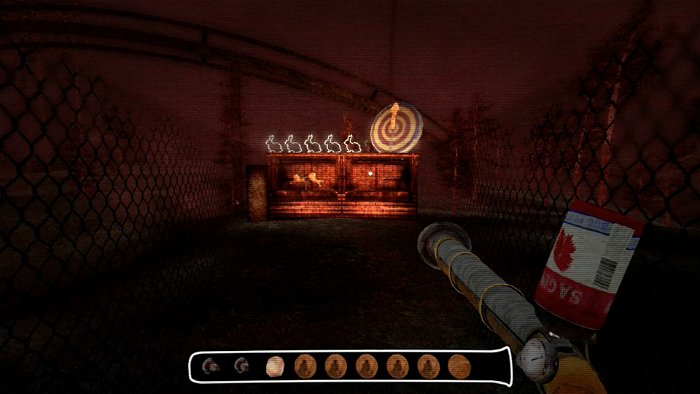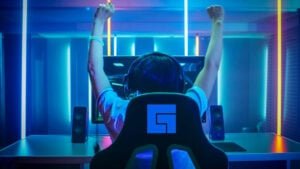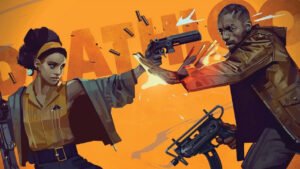Mainstream videogames are obsessed with visual fidelity. The announcement of a new title is greeted with discussions of its lighting effects, the quality of its environmental textures, and the realism of its character animation. We’re accustomed to thinking of noticeable advances in these areas as progress. More life-like characters and settings are meant to represent leaps forward for the medium. But, while prettier graphics can improve our experience with a videogame, higher definition visuals are an artistic choice like any other. A game’s look should reflect its design goals, even if that means it’s less visually impressive than it could be.
Apostrophe’s Sylvio is an unassuming horror game. From its protagonist’s whispered narration to the calm wind that blows across the abandoned park that serves as its setting, nothing about the self-released title is attention-grabbing. This fits in well with its goal, which is to creep its audience out by establishing a maintained, low key sense of dread rather than startle with more flashy, outright shocks. Most of the game involves exploring the park’s buildings and forests, solving puzzles and, most importantly, listening carefully for the microphone-amplified voices of the dead using a handheld tape recorder. Playing Sylvio is all about allowing the mind to fill in the gaps of audiovisual perception.

The success of the game’s design is important to highlight up front because a quick glance at screenshots or videos grabbed from Sylvio give the impression that its visuals are simply outdated. Sure, the game’s lowly detailed environment may have been a necessary constraint—Apostrophe seems to be a small development team—but this doesn’t mean that its early PlayStation-style look isn’t a good fit. Instead, like its generally subdued tone and the straining that accompanies listening for voices in static-y recordings, Sylvio’s visuals enhance its unsettling mood.
Better graphics usually lead to greater clarity in game environments. The PlayStation 4 can show the fine details of a hallway much better than a Nintendo 64, allowing players to notice details as minimal as a carpet’s texture or the finish applied to a cupboard. While this is great for many games, horror titles may actually benefit from giving their audience less visual information about their environment. Instead of being able to make out the exact shape of the surrounding environment—or the creatures stalking it—a smart developer can more effectively frighten a player by reducing what they can see.
The first Silent Hill game is one of the best examples of how a developer can use limited technological resources to their advantage. Released for the PlayStation One in 1999, Silent Hill looks extremely dated to modern eyes. Its characters are blocky and the rooms and streets it takes place in are blurry. But, because of this, exploring the deserted town is terrifying. It’s difficult to tell exactly what a monster looks like when it comes lumbering out of the game’s omnipresent fog (itself the result of technical limitations) or determine what certain textures in nightmarish levels are meant to represent. The player has to fill in the blanks with their own imagination. Because only the basic atmosphere of the game is made available, the audience is left to project their own fears over spaces that the developer hasn’t been able to render with high fidelity.
It’s the same concept as found footage films. The best of this horror sub-genre make great use of the viewer’s imagination to instil fear that may have been lacking with more direct representations of monsters and gore. Camcorder and cell phone footage works a lot like lo-fi videogame graphics. Both obscure what’s being portrayed on screen, leading to the audience “seeing” frightening things that aren’t actually there (the Paranormal Activity film series is practically built on this) or allowing their thoughts to personalize poorly defined creatures.
Videogames may constantly be chasing more realistic visuals, but horror titles don’t always need to take part. Their developers may be better served by embracing an “outdated” aesthetic that’s often perfectly suited to the genre.






